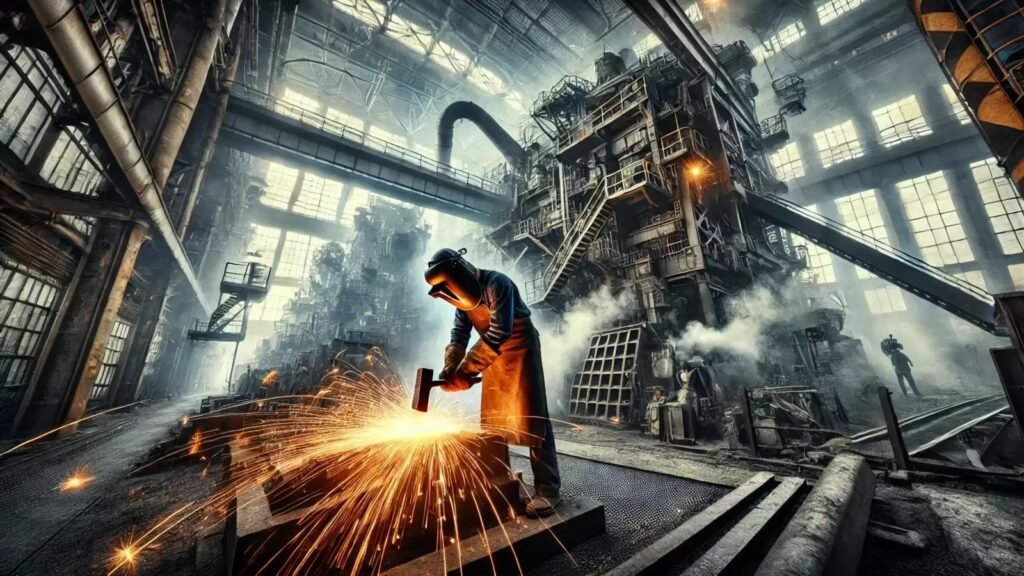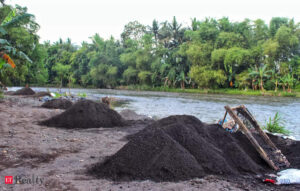Steelmakers warn of Q3 revenue drop, pin hopes on Q4 rebound

Top manufacturers including Tata Steel Ltd and the Steel Authority of India Ltd (SAIL) are bracing for a challenging December quarter, with a recovery expected only in the fourth quarter.
Despite hints of a recent rebound, average selling prices in the December quarter are expected to be lower by ₹1,500-2,000 per tonne from the previous quarter. “This is largely because in Q2, July prices were quite high and then dropped till September. In October, steel prices started going up, but we don’t expect prices in December to be the same as what it was in July,” Tata Steel managing director T.V. Narendran said at an analyst call.
Read this | India’s steel prices plunge to four-year low, most affordable since covid-19 pandemic
In the first half of FY25, a surge of over 51% in steel imports hammered local prices. In September, benchmark hot-rolled coil (HRC) prices fell to an average of ₹48,029 per tonne, slipping below the ₹50,000-per-tonne-mark for the first time since November 2020, according to data from BigMint, a market intelligence firm. Prices improved marginally to an average of ₹48,222 per tonne in October.
Domestic steel consumption in the September quarter stood at 37.1 million tonnes, up nearly 12% year-on-year, largely driven by demand from infrastructure, construction and automotive sectors. Local production, however, grew just under 3% to 36.2 million tonnes as imports catered to a bulk of the incremental demand.
Pricing squeeze and Chinese pressure
Domestic steelmakers also contended with pricing pressures as they adjusted to lower contract rates and grappled with a surge in cheaper imports.
Tata Steel recently renegotiated supply contracts with automakers to align with current market prices, which could further squeeze net realizations. According to Narendran, these Q2 contracts reflected higher steel prices from April, providing a temporary cushion that has since eroded as prices have softened. Automakers and steelmakers typically lock in prices for six months, meaning Tata Steel’s Q3 contracts will reflect a market where prices have come off their peaks.
Consequently, Narendran expects Tata Steel’s average net realizations per tonne in Q3 to be about ₹2,000 lower sequentially. The company’s Indian operations generated ₹32,399 crore in revenue in Q2, selling 5.1 million tonnes of steel at an average realization of approximately ₹63,400 per tonne, down from just over ₹66,700 per tonne in the preceding quarter.
At SAIL, Q2 average realizations stood at ₹50,500 per tonne, declining to roughly ₹48,000 in October before recovering to ₹49,500 in early November, finance director Anil Tulsiani said in a call with analysts.
Executives have cautioned that with December realizations unlikely to fully offset October’s low prices, a sequential decline in average prices for the October-December quarter is anticipated.
For steel companies, realizations per tonne serve as a key profitability metric, reflecting the average revenue earned on each unit sold and offering insight into pricing trends and market demand.
Steelmakers’ September quarter results were marred by declining realizations, with top players Tata Steel, JSW Steel, SAIL, and Jindal Steel and Power reporting annual revenue declines ranging from 5% to 17%. This pressure on toplines stems from a global slowdown in demand, compounded by China—the world’s largest steel producer—flooding international markets with excess supply at lower prices.
“There has been a sharp fall in steel prices this year, and one of the biggest reasons is that China is very active in the export market. Their exports this year are the highest in eight years, which has suppressed global steel prices. In India, while domestic demand is strong, margins remain under pressure,” said Dhruv Goel, chief executive, BigMint.
Read this | China’s real estate stimulus to aid Indian steelmakers but oversupply persists
Cost benefits to ease margin pressure
While Q3 selling prices are expected to remain low, Indian steelmakers are set to gain from falling input costs, which could help cushion their margins.
In a 5 November report, BNP Paribas India noted that local hot rolled coil (HRC) prices were at a significant discount to import prices from China, but on par with those from South Korea and Japan. It said that Indian steel prices could pick up if China announced a stimulus. China did announce a stimulus shortly after, but a Reuters report quoting economists said that investors were disappointed with it.
Executives from Tata Steel, SAIL, and JSW Steel anticipate lower prices for coking coal, a critical raw material in steel production, with costs projected to drop by ₹840-2,100 ($10-25) per tonne on average in Q3 compared to Q2 levels. The average price of coking coal in Q2 was around ₹22,000 per tonne.
Jayant Acharya, JSW Steel’s joint managing director, also expects domestic iron ore prices to stabilize despite a recent hike by NMDC, India’s state-run miner. “Coking coal cost reduction of $20 to $25 will be a positive. So, these will reduce our costs going into Q3,” Acharya had said in an analyst call in October.
Also read | Why JSW Steel’s expansion push is not enough to woo investors
Executives are cautiously optimistic about a potential recovery in Q4, driven by anticipated demand upticks. They said low inventory in the supply chain, including with dealers, is expected to result in higher demand in November and December. Other demand drivers will be the infrastructure segment and an anticipated rise in sales of commercial vehicles and tractors.
“We feel that the pricing in September had gone down steeply on the back of international drops. This has improved in terms of sentiments. I think the channel stocks had reduced, so restocking demand and demand from the institutional customers have improved,” Acharya said.
With domestic consumption poised to strengthen, there is hope that margins will improve, allowing the industry to regain some footing after a challenging year.








